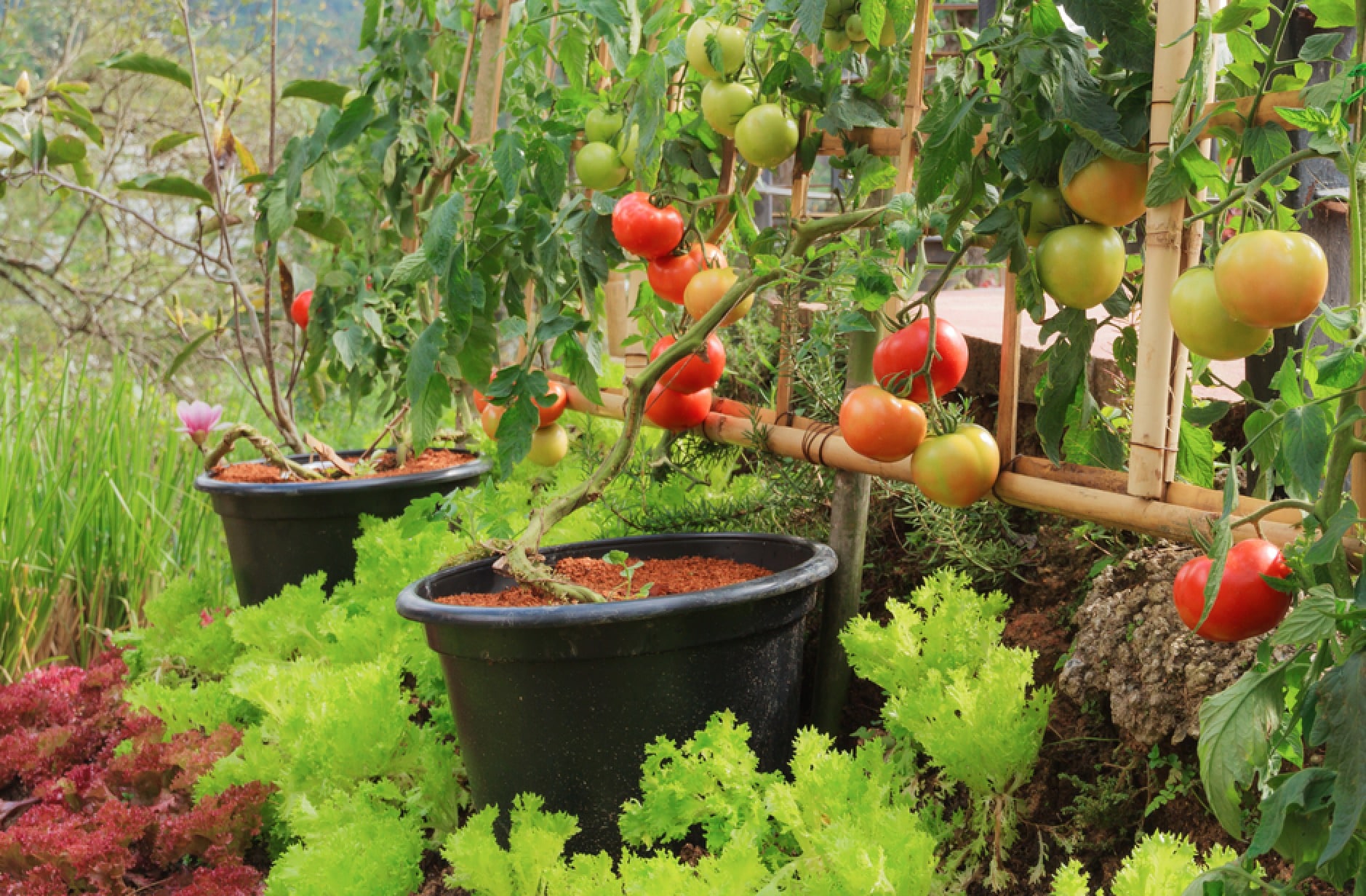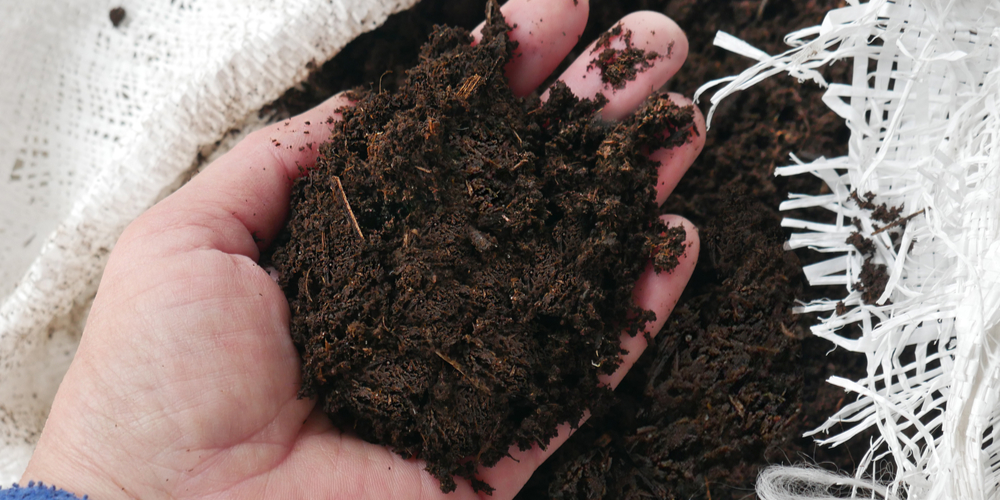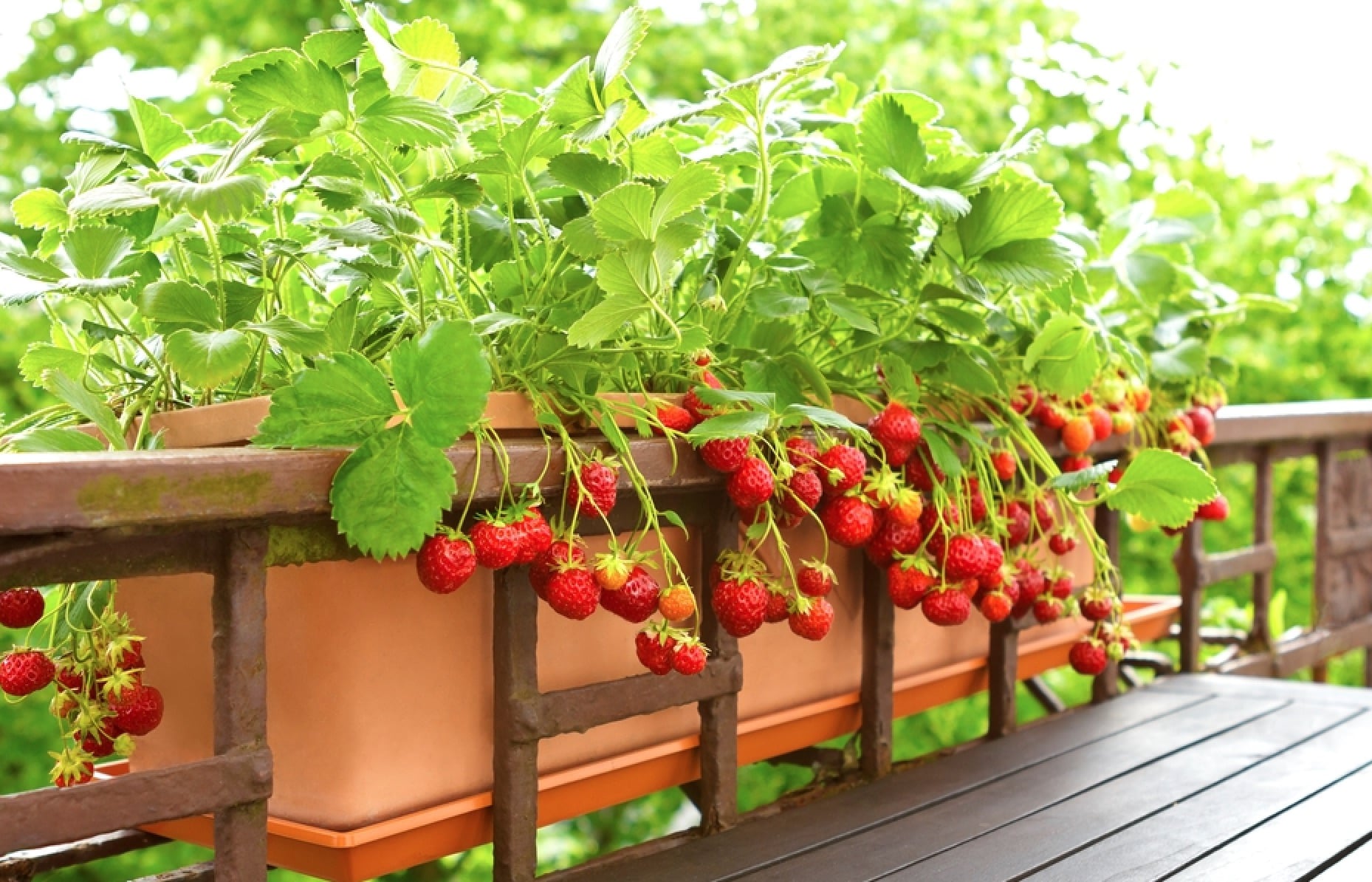Selecting Appropriate Containers
When creating your container garden on an Illinois balcony or patio, the right choice of containers is crucial for the thriving of your plants.
Material Considerations
Materials play a vital role in container gardening, affecting both the health of the plants and the ease of care:
- Clay or terracotta pots are porous, which allows the soil to breathe, but they may require more frequent watering due to increased evaporation.
- Plastic containers are lightweight and retain moisture better, but they can become brittle over time due to exposure to elements.
- Metal pots can offer a sleek look, but they heat up quickly, which can potentially damage the roots on hot days.
- Wooden containers provide a natural look and good insulation but ensure they are treated to prevent rot.
Size and Depth for Specific Plants
Choosing the right size and depth for your containers ensures that your plants have adequate space to grow:
- Shallow-rooted plants like herbs can thrive in containers as shallow as 6-12 inches.
- Medium-rooted plants such as peppers or strawberries do well in 12-18 inch pots.
- Deep-rooted plants, including tomatoes and dwarf fruit trees, will need containers that are at least 18-24 inches deep.
Remember to adjust container size as your plants grow or when accommodating multiple plants.
Drainage Essentials
Drainage is essential for preventing root rot and other water-related issues:
- Ensure pots have holes at the bottom to allow excess water to escape.
- Consider placing a layer of rocks or gravel at the base of the container to improve water flow.
- If using decorative containers without holes, use them as outer pots with a proper draining pot inside.
Choosing Suitable Plants
Selecting the right plants for your Illinois balcony or patio container garden is crucial. You must consider factors such as the climate, space, sunlight availability, and your personal preference.
Native Plant Recommendations
Illinois has a variety of native plants that are well-suited for container gardens. These options not only thrive in local conditions but also support local wildlife.
- Prairie Smoke (Geum triflorum): Enjoys full sun; adds whimsy with feathery seed heads.
- Purple Coneflower (Echinacea purpurea): Attracts pollinators; requires part to full sun.
- Wild Geranium (Geranium maculatum): Adaptable to light conditions; offers charming pink to lilac flowers.
Ornamental Flowers and Foliage
For a splash of color and texture, ornamental flowers and foliage can transform your space into a blossoming retreat.
- Petunias: Sun-loving and vibrant; good for hanging baskets.
- Impatiens: Ideal for shaded areas with colorful blooms.
- Caladium: Provides dramatic foliage; thrives in shade but keep away from pets.
Vegetable and Herb Varieties
Nothing beats the taste of homegrown vegetables and herbs. Here’s a list of some you can easily grow:
- Tomatoes: Choose dwarf varieties; need 6-8 hours of sun.
- Peppers: Both sweet and hot varieties do well; require full sun.
- Herbs like Basil and Mint: Perfect for smaller pots; need partial to full sun.
Soil and Fertilization Techniques
Creating a successful container garden on your Illinois balcony or patio hinges on selecting the right soil mix and understanding how to fertilize your plants to promote healthy growth.
Soil Mix Formulation
Your choice of soil mix is crucial as it must provide nutrients, aeration, and proper drainage to ensure the roots of your plants are healthy. A well-formulated mix for container gardening typically includes:
- Peat moss or coconut coir to retain moisture
- Perlite or vermiculite to improve aeration
- Compost to add essential nutrients
Customize your soil mix based on the plants you choose; some might prefer more moisture-retentive mixes while others thrive in well-draining conditions.
Fertilizer Types and Application
Fertilizers nourish your plants by supplementing essential nutrients that might not be present in sufficient quantities in the container soil. You can choose between:
- Chemical fertilizers: Offer quick-release nutrients but must be applied carefully to avoid root burn.
- Organic fertilizers: Release nutrients slowly and improve soil health over time.
A balanced general-purpose fertilizer labeled 10-10-10 (N-P-K) is often suitable for a wide range of plants. Fertilize regularly, following the product’s instructions, to maintain vigorous plant growth. Remember, over-fertilizing can be as harmful as under-fertilizing.
Caring for Balcony and Patio Gardens
To ensure your balcony or patio garden remains a lush and vibrant retreat, you need a tailored care approach. Focusing on watering, pest control, and seasonal adjustments will keep your plants thriving.
Watering Strategies
Your container plants can’t tap into the ground’s moisture, so it’s crucial to establish a regular watering schedule. Use the following guidelines:
- Check daily: Stick your finger into the soil; if it’s dry an inch below the surface, it’s watering time.
- Morning routine: Water early to reduce evaporation and allow leaves to dry, lessening disease risk.
- Self-watering containers: These can be a game-changer, especially if you have a busy schedule.
Pest and Disease Management
Vigilance is your best defense against pests and diseases. Illinois gardens may encounter aphids, spider mites, or mildew. Here are some preventative measures:
- Regular inspections: Catching problems early can prevent spreading.
- Natural predators: Attract beneficial insects like ladybugs with plants they favor.
- Neem oil or insecticidal soap: These can tackle infestations without harsh chemicals.
Seasonal Maintenance Tips
Your garden will need different care as the seasons change in Illinois:
-
- Spring: Transition plants outdoors gradually to harden them off.
- Summer: Shield plants from intense midday sun with shade cloth if necessary.
- Fall: Begin to protect or move sensitive plants inside.
- Winter: Replace frost-sensitive plants with cold-hardy varieties or use protective covers.
Design and Layout Ideas
Container gardening offers an exciting way to bring life to your balcony or patio in Illinois. Through thoughtful design and layout, you can maximize your space while creating a visually appealing and functional garden environment.
Maximizing Limited Space
To make the most of your small area, consider vertical gardening by stacking planters or using wall-mounted containers. This technique allows you to grow a variety of plants upward rather than outward, conserving valuable floor space. Tiered plant stands are another excellent way to arrange your containers at different heights, adding depth and the opportunity to grow more plants in the same footprint.
Creating Visual Appeal
Color coordination and plant selection play critical roles in creating a visually attractive container garden. Arrange plants with varying heights, textures, and colors to create a diverse yet harmonious display. Incorporating decorative pots or vibrant containers can also add a touch of personality to your balcony or patio. Use bold foliage plants as centerpieces in your arrangements, surrounded by flowering species to draw the eye and provide a natural color palette.
Incorporating Functional Elements
While aesthetics are important, functional elements like edible herbs and vegetables can also thrive in container gardens, providing fresh produce just steps from your kitchen. Incorporate these alongside ornamental plants for a dual-purpose space. Additionally, self-watering containers or a drip irrigation system can streamline maintenance, ensuring your plants receive consistent moisture without daily attention. This practical approach saves time and safeguards against the fluctuations in weather that can be characteristic of Illinois’ climate.
Frequently Asked Questions
Embarking on a container gardening adventure on your Illinois balcony or patio comes with a set of common inquiries. Below, we tackle the specifics to boost your confidence and skills in urban horticulture.
What are the best plants for creating a tropical-style container garden on an Illinois balcony?
For a tropical flair, consider plants like Hibiscus, Mandevilla, and Bird of Paradise. These can thrive in containers during the warmer months. Remember to bring them indoors when the Illinois winter approaches, as they’re sensitive to cold.
How can one make effective use of small spaces for container gardening on balconies and patios?
Maximize vertical space by using hanging baskets, wall planters, or tiered stands. Select dwarf or compact varieties of plants that won’t outgrow their spaces, like dwarf tomatoes or miniature roses. These are well-suited for tighter areas.
What are some unique container ideas for adding visual interest to Illinois patio gardens?
Repurpose items like old watering cans, wooden crates, or brightly painted metal buckets as planters. These add a creative twist and personalize your space. Ensure proper drainage by adding holes and consider mobility with heavier containers by placing them on caddies.
How do you protect container plants from harsh winter weather on Illinois balconies?
Move sensitive potted plants indoors before the first frost. For hardier varieties, wrap containers in burlap or bubble wrap to insulate roots. Consider a cold frame to shield against wind and snow, extending the growing season.
What strategies can be employed to maximize sunlight exposure for container plants on an Illinois balcony?
Observe the light patterns throughout the day and position plants accordingly. Use reflective surfaces like mirrors to direct light to shadier spots. Rotate plants regularly to ensure all sides receive equal sunlight, promoting even growth.
What materials are best-suited for container gardens on balconies and patios, considering weight and durability?
Opt for lightweight materials like fiberglass, resin, or foam composites for easy moving.
For durability, choose glazed ceramic or metal containers.
Always balance the weight capacity of your balcony or patio with the size and number of containers you plan to use.


